For various reasons my own visit to Willandra only barely
overlapped with that of the COG expeditionary force, as I arrived on Tuesday
and came back yesterday, but I was able to give them a debrief on birds
observed in the Greater Willandra precinct. This did not take long.
There was no water at all in the creek, merely the odd baking freshwater mussel
and dried out tortoise, and very little elsewhere save for the jets from the
bore being applied freely to the ludicrously green lawns around the homestead.
We had the usual discussion about what kind of kangaroos. My own guess is
that this is an Eastern Grey. Whatever it was, it liked picking up with
its forepaw the fallen green leaves of a large deciduous tree and chomping on
them.
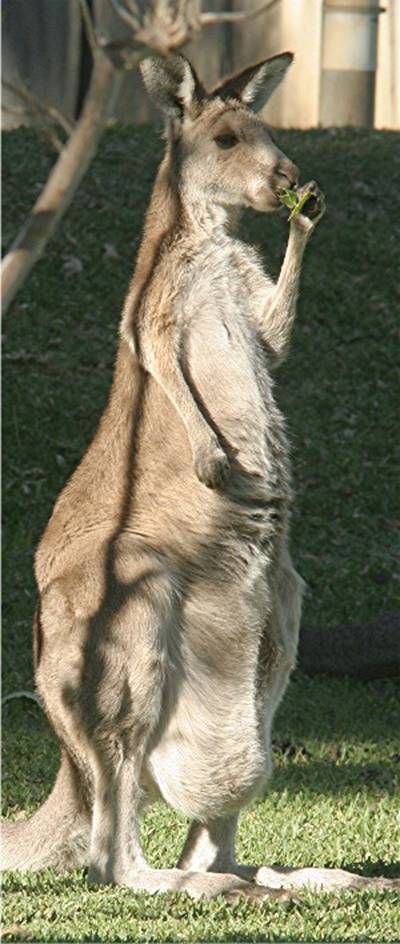
Out on the plains, I think this might have been a Western
Grey, in company with a large Red. It was along the tourist drive taking
advantage of a dwindling puddle from a shower last week, but there won’t
be any of that left if there’s no more rain soon.
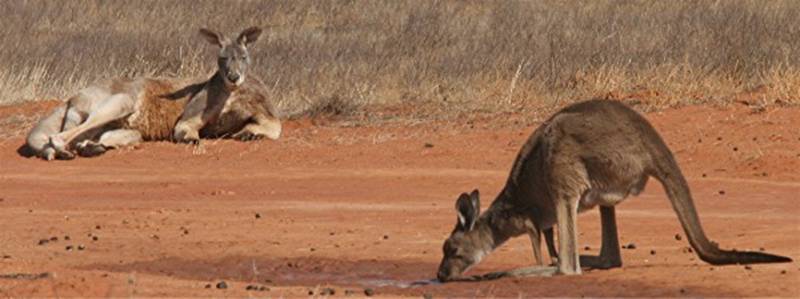
By comparison with previous visits there had been a lot of
growth of what I take to be, if you will pardon another guess, ‘Nitre
Goosefoot”. Early on my first morning I came across a flock
of about 30 goats, and I assumed they were penned until they took off THROUGH
the fencing without the slightest difficulty, thus.
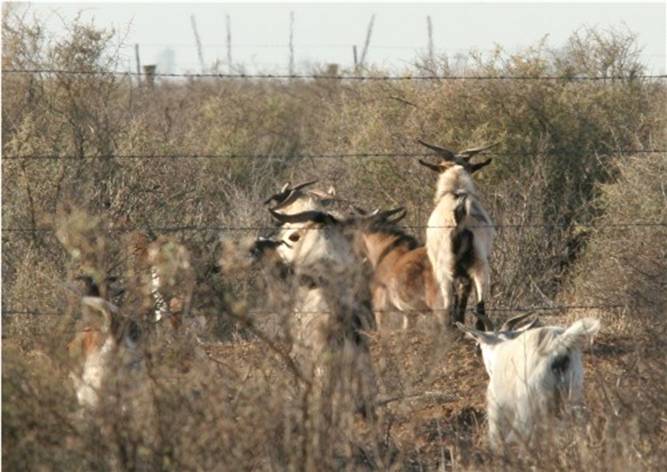
As for the birds, well one of the more interesting sights
was the sky-darkening flocks of corellas at Hillston. This small segment
is about 80 birds and it was about one third of a treefull among 3
similarly laden trees, so that would make over 600 birds.
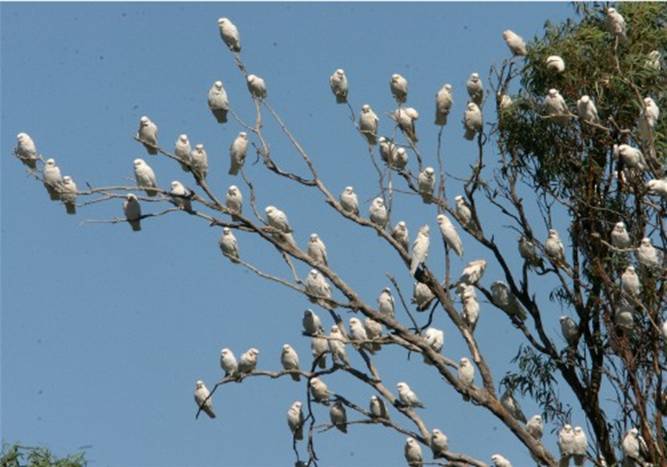
At Willandra there was no shortage of galahs and crested
pigeons around the buildings. There were also a lot of butcherbirds (both
kinds), in fact as many as could be fitted in, territorially speaking.
They must have been hard on the smaller birds, with plenty of thornbills and
confusing non-breeding f/wrens. The commonest small bird was probably the
Chestnut-rumped Thornbill, distinguishable by the pale eye and sheep’s-fleece
face, as well as the almost ever-present ‘tseeps’.
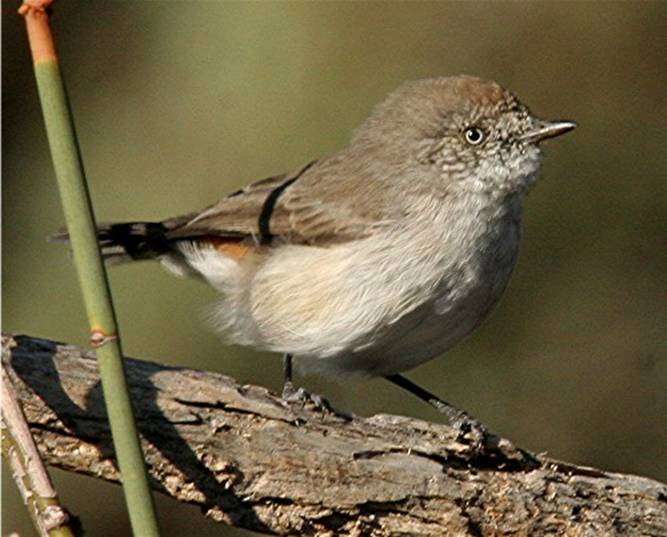
On my first day I did one long drive through the bare
grazing country north of the park. One intersetin sight was this
peregrine that had perched in about the only shade available, on the cross-bar of
a power-pole right where there was shadow from the pole. When I flushed
it from that perch it relocated to the corresponding spot on the next pole down
the line to resume its watch.
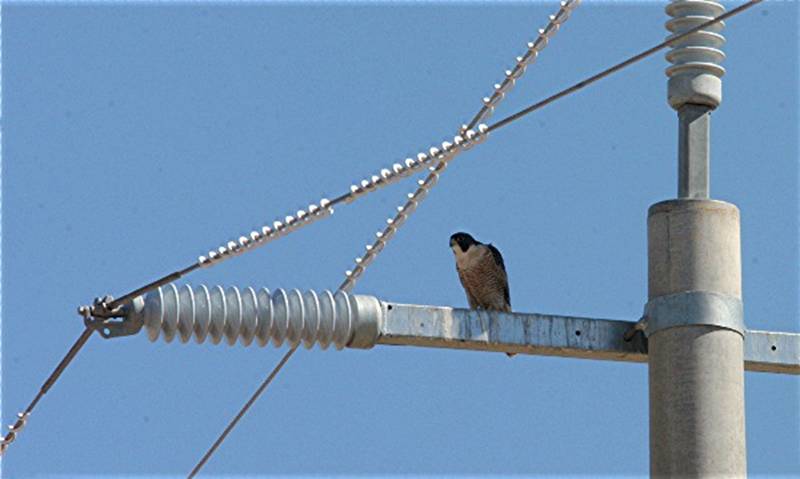
One little bird-behaviour ob might be of interest. It
was not until yesterday morning when I was packing to leave that I realised the
band of WB Babblers that had been around the camp was engaged in building a
‘nest’. It was, at least to this point, an untidy cup, unlike
the usual ball-shaped affair, and from time-to-time 4 of the band would huddle
together in it. Yet another of my guesses is that it was to be used as a
communal roost-nest, possibly in anticipation of cold weather.
Alternatively. This might have been an isolated population that had not had the
opportunity to consult ‘Nest and Eggs of Australian Birds’
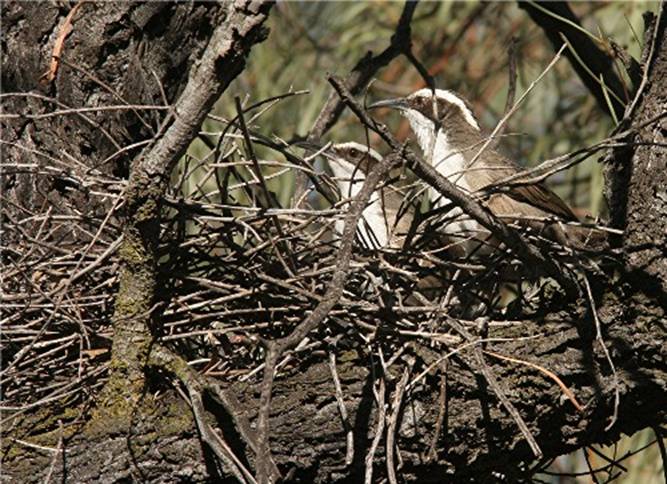
The ‘nest-building’ was disrupted when a
butcherbird appeared and claimed possession of the nest, sitting in it for
about 3 minutes and picking at twigs in the centre. The material looks a
bit fine for an old bb nest, so possibly this was just a sending of message
‘I know where you live’. I didn’t have time to
wait to see whether the babblers were deterred by this.
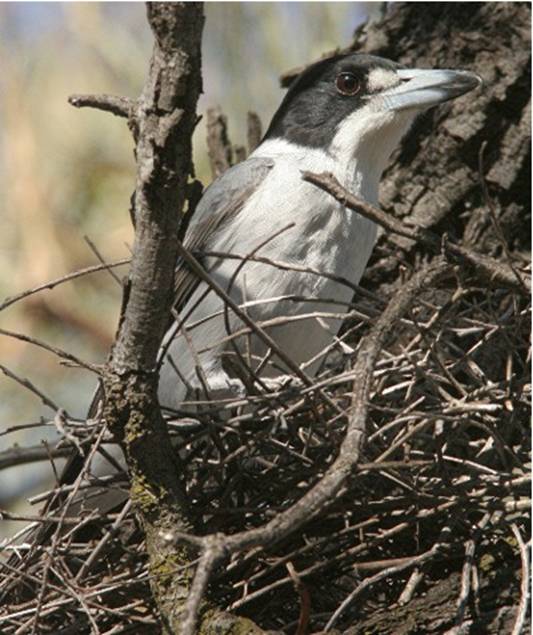
Those are a few of my impressions of the easter outing thus
far. No doubt the main party will have much more to report from that
fascinating if now depressingly arid part of western NSW. All
were in good spirits when I last saw them, being expertly but gently
coordinated by Sue Lashko, and looking forward to last night’s communal
feast, but whether they will have performed the arcane rite of the traditional
Giant Chocolate Easter Bilby I am unable to tell you.

